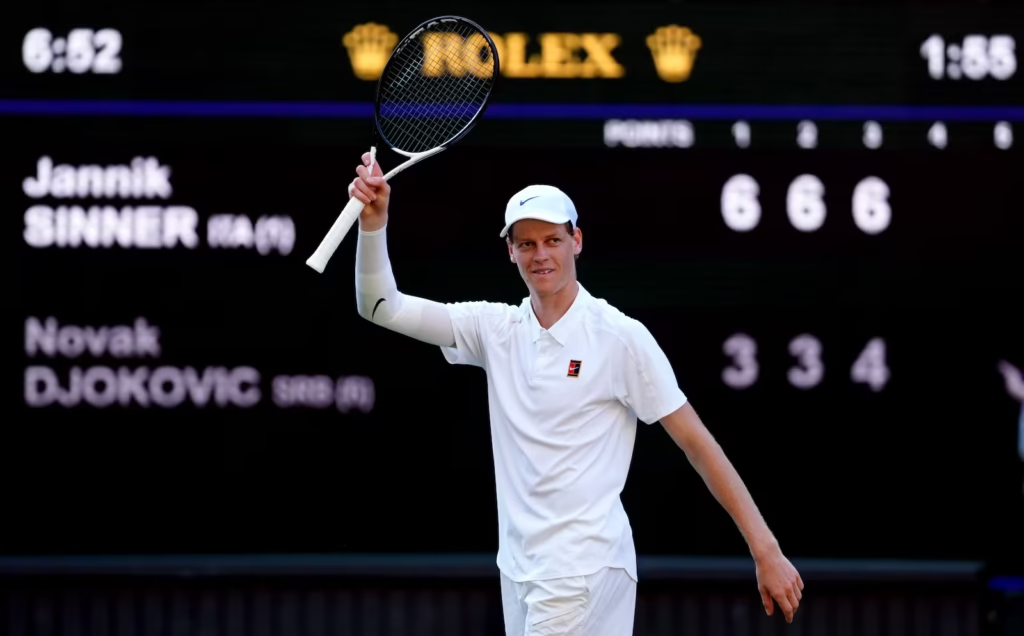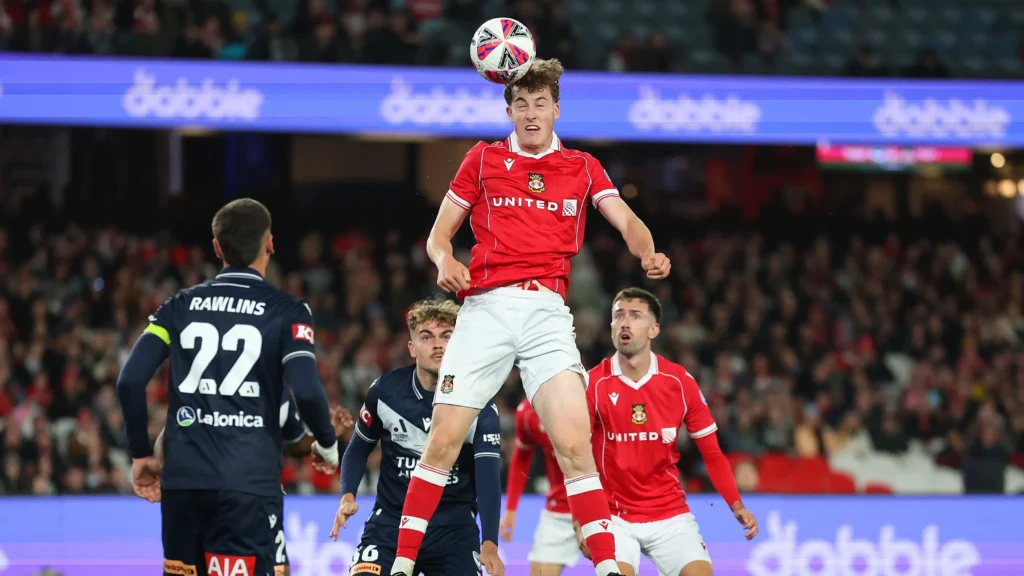
Jannik Sinner delivered a masterclass on Centre Court, dispatching Novak Djokovic in straight sets—6‑3, 6‑3, 6‑4—to reach his maiden Wimbledon final and set up a blockbuster rematch with Carlos Alcaraz. The Italian’s dominant performance not only ended Djokovic’s six-year reign at this stage but also signaled a seismic shift at the pinnacle of men’s tennis.
From the outset, Sinner seized control, breaking Djokovic early in both the first and second sets. His return game was sharp and aggressive, continuously forcing the seven‑time Wimbledon champion into reactive positions. Djokovic, hampered by a thigh injury sustained in his quarterfinal against Flavio Cobolli, never found his trademark rhythm. He managed a flicker of comeback in the third set, briefly leading 3–0, but Sinner’s composure and precision extinguished any hopes of a reversal.
Sinner’s sheer dominance was reflected in the scoreboard: he dropped just six points on serve, never faced a break point before early in the third set, and consistently pressured Djokovic’s second serve—winning 25 of 30 of these critical points. Even Djokovic himself admitted he felt “tank half empty,” candidly conceding that he was physically compromised and unable to match Sinner’s intensity.
The performance marked more than a victory—it was a statement. At just 23, Sinner joined an elite club: reaching all four Grand Slam finals in the same year, a feat last matched by the legends Federer, Nadal, Murray, and Djokovic themselves. His straight‑sets demolition of a still‑formidable Djokovic signaled not just physical dominance, but a mental edge on tennis’s most hallowed turf.
Looking ahead, the final promises to be epic. Sinner will face Carlos Alcaraz—the dynamic Spaniard and reigning two‑time Wimbledon champion—setting up a rematch of their legendary French Open final from just weeks earlier. That five‑hour, 29‑minute epic saw Alcaraz edge out Sinner after he held three championship points, and the tennis world is now primed for a sequel larger than life.
This clash of world No. 1 (Sinner) vs. world No. 2 (Alcaraz) is historic—it’s the first time since 1973 that the top two ranked players will face off in multiple Grand Slam finals in the same season. Their rivalry, already rich with drama and momentum, promises to be the defining narrative of modern men’s tennis.
Alcaraz secured his spot with flair too, overcoming Taylor Fritz in a thrilling four‑set semifinal that demonstrated both his resilience and his legendary flair for dramatic comebacks. Like Sinner, he arrives battle‑tested and ready for a final showdown.
For Djokovic, this defeat likely signals a changing of the guard. At 38, even his inspiring mental fortitude couldn’t counter Sinner’s youth and physicality. Pundits now suggest this might mark the final chapter of Djokovic’s dominance at Wimbledon. The end of a dynasty, and the rise of a new one.
In the postmatch pressers, Sinner was both humble and ambitious: “Hopefully it’s going to be a good match, like the last one,” he said of the upcoming final against Alcaraz. Alcaraz echoed the sentiment, acknowledging their Paris duel as possibly the greatest match he’s ever played and anticipating a Sunday classic in London.
Sunday’s final won’t just be a match—it will be a defining moment. Will Sinner avenge his French Open loss? Will Alcaraz clinch a historic third straight major title? Whatever the result, one thing is clear: men’s tennis has firmly entered a new era, one shaped by these two electrifying young champions.
The setting couldn’t be grander. Wimbledon’s Centre Court, where titans like Sampras, Federer, and Djokovic etched their names into history, will now witness a new rivalry blossom under global scrutiny. Sinner, stoic and surgical in his gameplay, will need every ounce of that composure to hold off Alcaraz’s aggressive court coverage and instinctual flair.
Tactically, their styles contrast beautifully. Sinner’s flat groundstrokes and lethal backhand are built for grass—low bounce, fast pace—while Alcaraz’s variety, touch volleys, and fearlessness on the big points give him the edge in momentum shifts. Whoever seizes the moment first could dictate the tone.
Mentally, this final is about more than just tennis—it’s about vindication and evolution. For Sinner, it’s about proving that the French Open heartbreak wasn’t his ceiling but a springboard. For Alcaraz, it’s a chance to cement his supremacy, to go three-for-three in Grand Slam finals this season, and to continue writing a historic chapter as perhaps the youngest to dominate across all surfaces.
Fans, players, and pundits alike are witnessing the dawn of a new golden age in men’s tennis. For years, the sport revolved around the “Big Three”—Federer, Nadal, and Djokovic—whose grip on the majors seemed eternal. But Wimbledon 2025 has made it undeniably clear: the torch has been passed.
And if this final lives up to the hype—as it surely will—the world won’t just be watching two great players. It will be watching the birth of a rivalry that could define the next decade. Sinner and Alcaraz aren’t just playing for the Wimbledon title—they’re competing for the future of tennis.
On Sunday, Centre Court won’t just be the stage for another championship. It will be the arena where legacy, vengeance, and the evolution of a sport collide. With history on the line and greatness in the making, all eyes turn to Wimbledon for what promises to be a match for the ages.







7owzsr